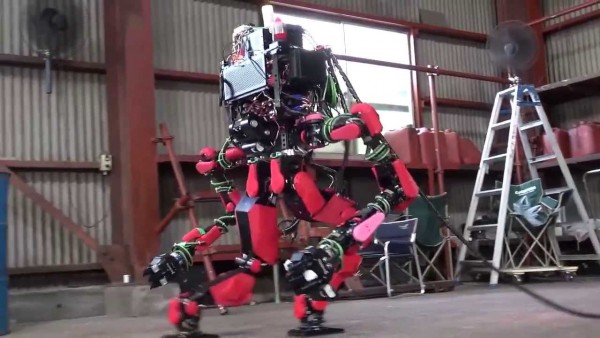First Posted: Dec 22, 2013 03:46 PM EST

A team from Japan has walked away with the top prize from an international rescue robot contest held by the United States' Defense Advanced Research Projects Agency, part of the Department of Defense.
The two-legged robot built by SCHAFT Inc. scored the most points over the two-day DARPA Robotics Challenge Trials in Homestead, Florida.
Two American-based teams rounded out the top three, with IHMC Robotics from Florida taking second place and Carnegie Melon University placing third.
Drawing 17 teams from throughout the world, the robotics challenge was staged Dec. 20-21 at Homestead Miami Speedway. The teams competed for a chance at a $2 million award next year, at the competition's last round. The top eight teams were selected to move on and are now eligible for $1 million in support to help their preparations for the final stage.
A team from China was planning on competing as well, but some travel issues prevented it from attending.
The robotic competitors were evaluated on their ability in performing physical tasks that included traveling over uneven terrain, removing debris blocking a doorway, driving a vehicle through an obstacle course, fetching and then connecting a hose, climbing an industrial ladder, opening three types of doors, closing a series of valves and using tools to cut through drywall.
The champion robot, Team SCHAFT's S-One, weighing in at 209 pounds, collected 127 points in the
The entry by Team IHMC Robotics gave the S-One a run for its automated money, closing the score gap between the two during the second day of the contest. The IHMC robot earned cheers from onlookers after ut successfully navigated through three different types of doorways.
The entry from Carnegie Melon University was a 400-pound robot dubbed CHIMP, short for CMU Highly Intelligent Mobile Platform, which stands 5 feet 2 inches tall and has 39 separate motors, including ones that position two laser radars on its head, providing its operators location data.
The DARPA event has been described as a pivotal event in robotics, ushering an era when an entire generation of mobile robots will aid in disaster and other rescue situations, traveling and working where humans can't.
The research agency is focused on developing automated systems that could potentially be used in situations like the recent meltdown of the nuclear power plant in Fukushima, Japan --- where there were actually no rescue robots available when the disaster started. That fact alone greatly upset many in a country where advanced robotics not only an integral part of the economy but also an important aspect of Japanese culture and lore, as evidenced through the myriad robot-inspired films, TV shows, books and magazines.
{ 0 comments... Views All / Send Comment! }
Post a Comment